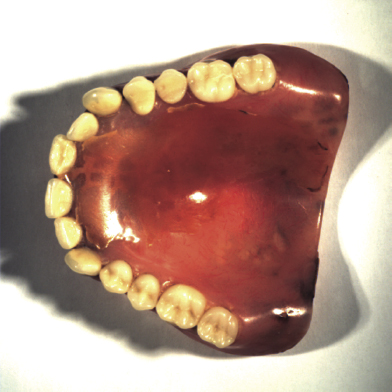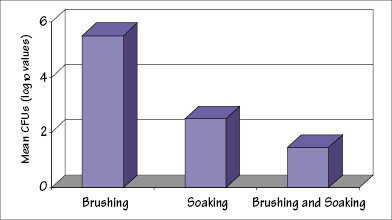24
Denture cleansing
Figure 24.1 Cameo surface of a dirty denture. (Courtesy of GSK.)

Figure 24.2 Numbers of colony-forming units (CFUs) recovered from dentures after cleaning. (Based on Dills SS, Olshan AM, Goldner S, Brogdon C. Comparison of the antimicrobial capability of an abrasive paste and chemical-soak denture cleaners. J Prosthet Dent (1988) 60(4):467–470.)

(Based on Glass RT, Bullard JW, Hadley CS, Mix EW, Conrad RS. Partial spectrum of microorganisms found in dentures and possible disease implications. J Am Osteopath Assoc (2001) 101:92-94.)
Denture cleanliness and bacterial colonization are strongly correlated. The prevalence of denture stomatitis, reportedly as high as 65%, emphasizes the importance of early prevention of binding and accumulation of denture plaque. Denture materials do not resist adherence and possible damage by oral bacteria, and soft liners, tissue conditioners, and denture adhesives are particularly susceptible to microbial growth. A typical dirty denture is shown in Figure 24.1; however, there is limited information />
Stay updated, free dental videos. Join our Telegram channel

VIDEdental - Online dental courses


